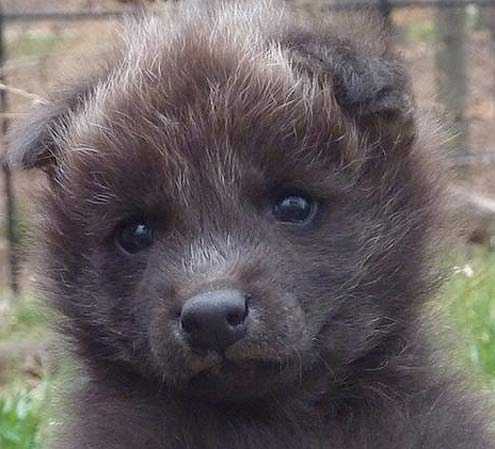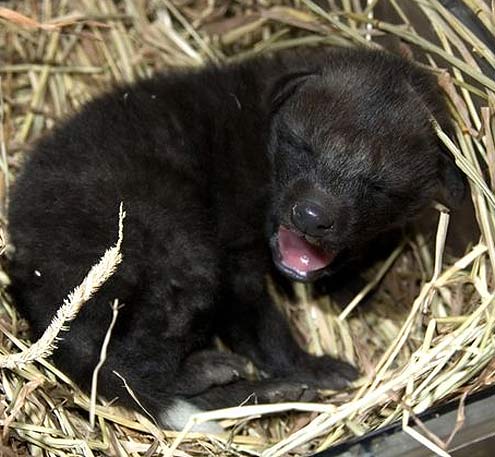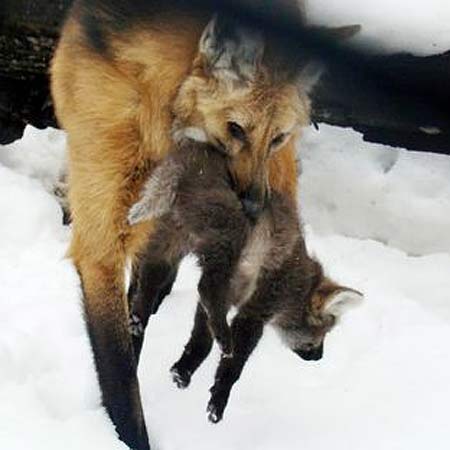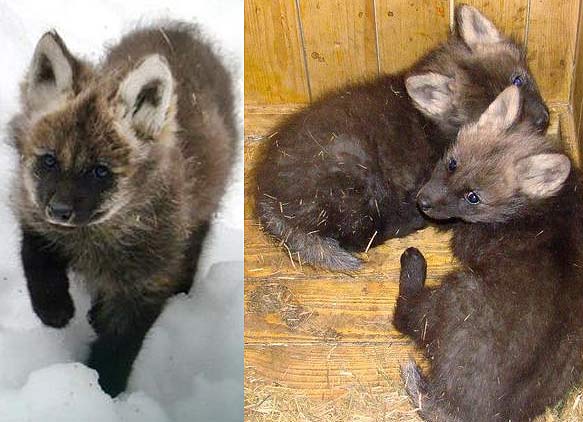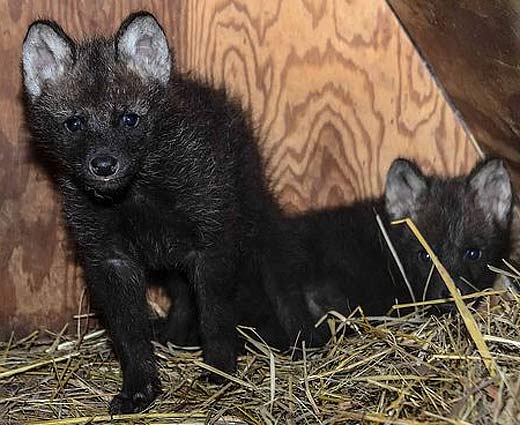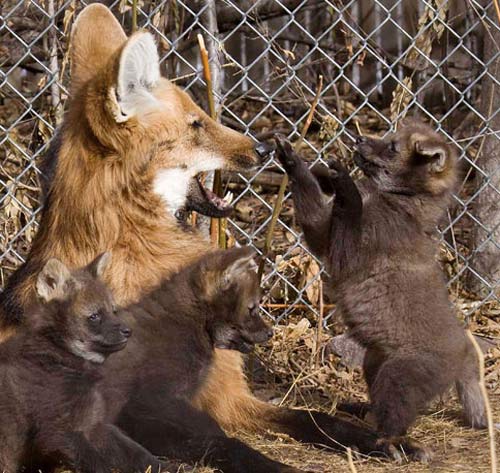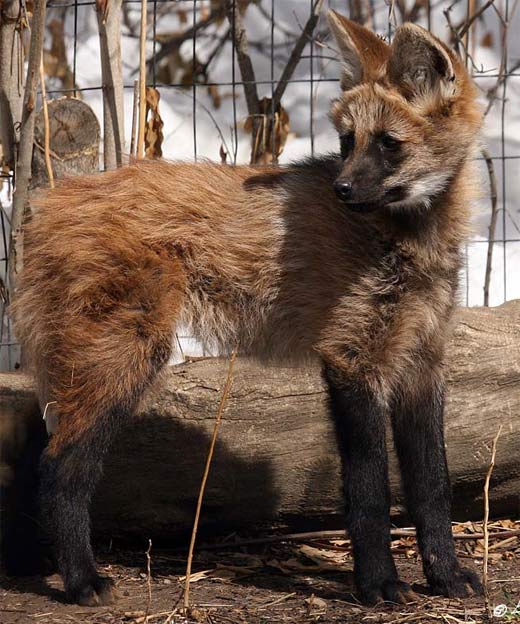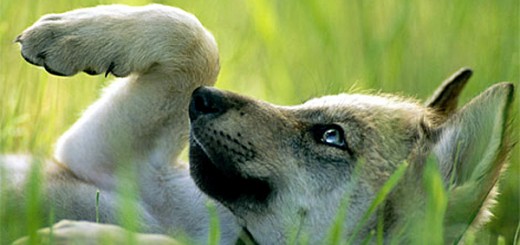Maned Wolf Puppies
Timid and skittish, maned wolves are not easy to find in the wild and are shy in captivity as well. Any unfamiliar sounds or sights is likely to send them fleeing. You might not expect this though because the wolf is the biggest canid of South America standing nearly 3 ft (1 m) and weighing 50 lb (23 kg) on average. This gives them the size to behave more aggressively but it just isn’t in their nature. However, they can be bred to display more aggressive tendencies although we are not sure why someone would want to do that. They are in fact difficult to breed in captivity as various attempts at zoos and reserves have had difficulty finding a diet that keeps them healthy and happy. Unhealthy wolves are not usually too excited about reproducing. In the wild their diet consists of rodents, rabbits, birds, but also a good deal of fruit.
Because of its smallish head and red coloration the maned wolf is sometimes confused with or thought to be related to the red fox. They are not at all closely related and they are not even very closely related to other wolves. They live in the central parts of South America – Brazil, Paraguay, and Bolivia where they do face some competition from the crab eating fox and the hoary fox, not to mention humans. This has contributed to their declining numbers in the wild where there are around 20,000 individuals.
Maned wolves do not roam around in packs but do live in male and female pairs for the purpose of producing their offspring. The female is pregnant for about 65 days then gives birth to a litter or usual 2-6 puppies. The puppies are born with black fur and will take about 1 year to be fully grown. The skittish mother wolf will carry her pups from den to den in order to find the safest place for the little ones.

